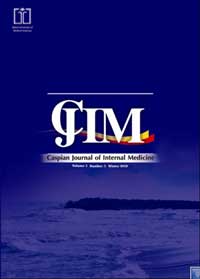Neutrophil-to-Lymphocyte and Platelet-to-Lymphocyte Ratios in COVID-19 Patients and Control Group and Relationship with Disease Prognosis
Authors
Affiliations
Abstract
Background: The present study aimed to compare the complete blood count (CBC) indices between COVID-19 patients and the control group, and assess the relationship of these indices with COVID-19 prognosis.
Methods: COVID-19 patients (confirmed by PCR or CT-Scan) who visited Imam Hospital in Sari were selected in this case-control study. The control group was selected from Tabari cohort population matched with the case group in terms of gender and age. CBC, neutrophil-to-lymphocyte ratio (NLR), platelet-to-lymphocyte ratio (PLR), and outcome of the disease (in the case group) were assessed in this study.
Results: The number of participants were 527 in both case and control groups, of which, 232 (44%) were females in each arms. Platelet count, lymphocyte count, and hemoglobin concentration were also higher in the control group (P=0.000). NLR and PLR were significantly higher in COVID-19 patients compared to the control group (P=0.000). NLR had a significant relationship with the severity of the disease. NLR was two times higher in the patients who died of COVID-19 than those who recovered (P=0.000). ROC curve analysis for diagnostic values of NLR and PLR showed that the areas under the ROC curves for NLR and PLR were 0.703 (95% CI: 0.64-0.76) and 0.535 (95% CI: 0.46-06), respectively.
Conclusion: NLR can be used as a prognostic marker for COVID-19 given the significant difference of NLR between those who died and recovered from COVID-19.
Keywords: COVID-19; Neutrophil-to-Lymphocyte ratio; Platelet-to-Lymphocyte ratio; Prognosis.

